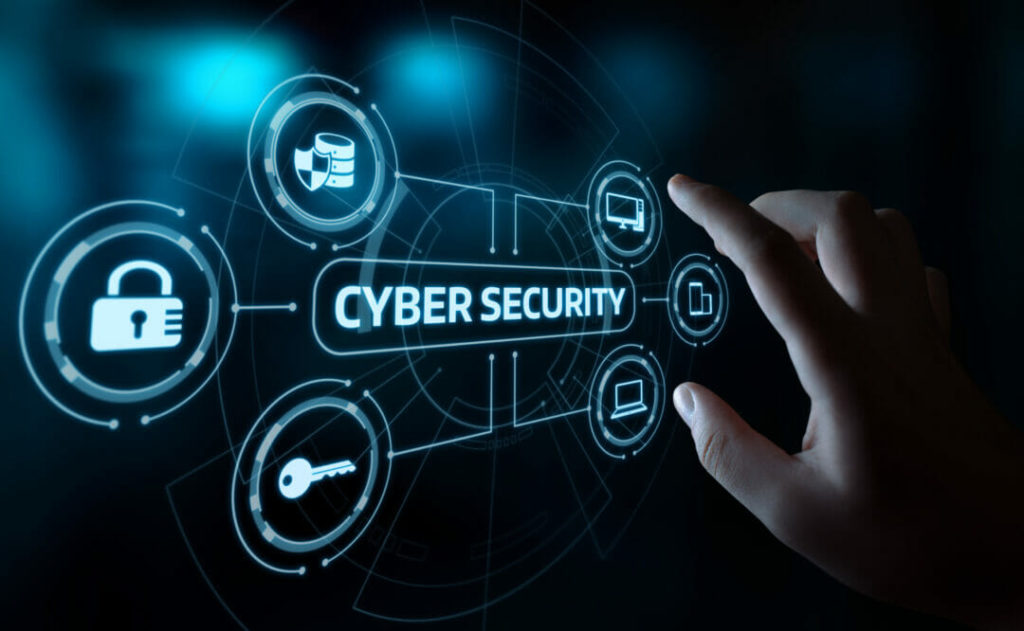
What Is Cybersecurity?
Cybersecurity is the activity of safeguarding internet-connected systems, including hardware, software, and data, against cyberthreats. It is used by consumers and businesses to prevent unwanted access to data centers and other digital systems.
An good cybersecurity plan may offer a strong defense against harmful assaults that attempt to access, change, delete, destroy, or extort an organization's or user's systems and sensitive data. Cybersecurity may also help avoid attacks that aim to disable or impair the functioning of a system or device.
An effective cybersecurity strategy should include many layers of defense across all possible access points and attack surfaces. This comprises a layer that protects data, software, hardware, and network connections. Furthermore, all personnel in a business who have access to any of these endpoints should be taught in the correct compliance and security procedures. Organizations also employ solutions like unified threat management systems to provide another layer of security against attacks. These technologies can identify, isolate, and remediate possible problems while also notifying users if further action is required.
Why Is Cybersecurity Important?
With the number of people, devices, and programs in the contemporary organization rising, so does the volume of data, most of which is sensitive or secret. Cybersecurity is more vital than ever. However, the sheer number and skill of cyberattackers and attack tactics exacerbates the situation.
Malicious actors may put an organization's activities to a standstill if there is no adequate cybersecurity plan in place, and workers are not properly taught in security best practices.
What Are The Components Of Cybersecurity, And How Do They Work?

The cybersecurity sector is divided into numerous parts, and their cooperation inside an organization is critical to the effectiveness of a cybersecurity program. These sections include the following:
-
Application security.
-
Information and data security.
-
Network security.
-
Disaster recovery and business continuity planning.
-
Operational security.
-
Cloud security.
-
Critical infrastructure security.
-
Physical security.
-
End user education.
Maintaining cybersecurity in an ever-changing threat environment is a challenge for all companies. Traditional reactive techniques, in which resources were directed toward safeguarding systems from the most well-known risks while leaving lesser-known dangers undefended, are no longer adequate. To stay up with evolving security threats, a more proactive and adaptable strategy is required. Several leading cybersecurity consulting groups provide recommendations. For example, the National Institute of Standards and Technology (NIST) proposes incorporating continuous monitoring and real-time assessments into a risk assessment framework to protect against known and unexpected hazards.
What Are The Advantages Of Cybersecurity?
The advantages of developing and sustaining cybersecurity procedures are as follows:
-
Business protection against cyberattacks and data breaches.
-
Protection of data and networks.
-
Unauthorized access is prevented.
-
Improved recovery time after a breach.
-
Protection for end users and endpoint devices.
-
Regulatory compliance.
-
Business continuity.
-
Increased confidence in the company's reputation and trust among developers, partners, consumers, stakeholders, and workers.
What Are The Many Forms Of Cyber Threats?
Keeping up with emerging technology, security trends, and threat information is a difficult endeavor. It is vital to safeguard information and other assets against cyberthreats, which may take numerous forms. The types of cyberthreats include the following:

-
Malware is a kind of harmful software in which any file or application may be exploited to damage a user's computer. Malware comes in many forms, including worms, viruses, Trojans, and spyware.
-
Ransomware is a sort of malware in which an attacker locks the victim's computer system data, usually by encryption, and demands money to decode and unlock them.
-
Social engineering is a kind of assault that takes advantage of human contact. It dupes users into violating security protocols in order to get sensitive information that is generally safeguarded.
-
Phishing is a kind of social engineering in which false email or text messages are delivered that seem to come from respectable or well-known sources. Phishing mails are sometimes random attempts with the purpose of stealing sensitive data, such as credit card or password information.
-
Spear phishing is a sort of phishing that targets a specific user, organization, or company.
-
Insider threats refer to security breaches or losses caused by people, such as workers, contractors, or consumers. Insider threats may be malevolent or irresponsible in nature.
-
Distributed denial-of-service (DDoS) attacks occur when several systems interrupt the traffic of a specific system, such as a server, website, or another network resource. DDoS assaults, which flood the target with messages, connection requests, or packets, may delay or break the system, blocking genuine traffic from access.
-
Advanced persistent threats (APTs) are long-term targeted attacks in which an attacker infiltrates a network and goes undiscovered for an extended period of time. The purpose of an APT is to steal information.
-
Man-in-the-middle (MitM) attacks are eavesdropping attempts in which an attacker intercepts and relays communications between two parties who think they are speaking with one another.
-
SQL injection is a method that attackers employ to obtain access to a web application database by inserting a string of malicious SQL code into a database query. SQL injection allows attackers to get access to sensitive data and execute malicious SQL commands.
How Is Automation Used In Cybersecurity?
Automation has become a critical component in protecting businesses from the growing quantity and complexity of cyberthreats. Using AI and machine learning in areas with high-volume data streams may assist enhance cybersecurity in the following three major categories:
Threat detection. AI systems can evaluate data and detect existing dangers, as well as forecast fresh threats that leverage recently found attack methodologies that circumvent conventional protection.
Threat response. AI systems generate and automatically implement security measures.
Human enhancement. Security professionals are often overwhelmed with warnings and repeated work. AI may assist reduce alert fatigue by automatically triaging low-risk warnings and automating large data analysis and other repetitive operations, freeing up human resources for more complex work.
Automation also provides advantages in cybersecurity such as attack categorization, malware classification, traffic analysis, compliance analysis, and more.





